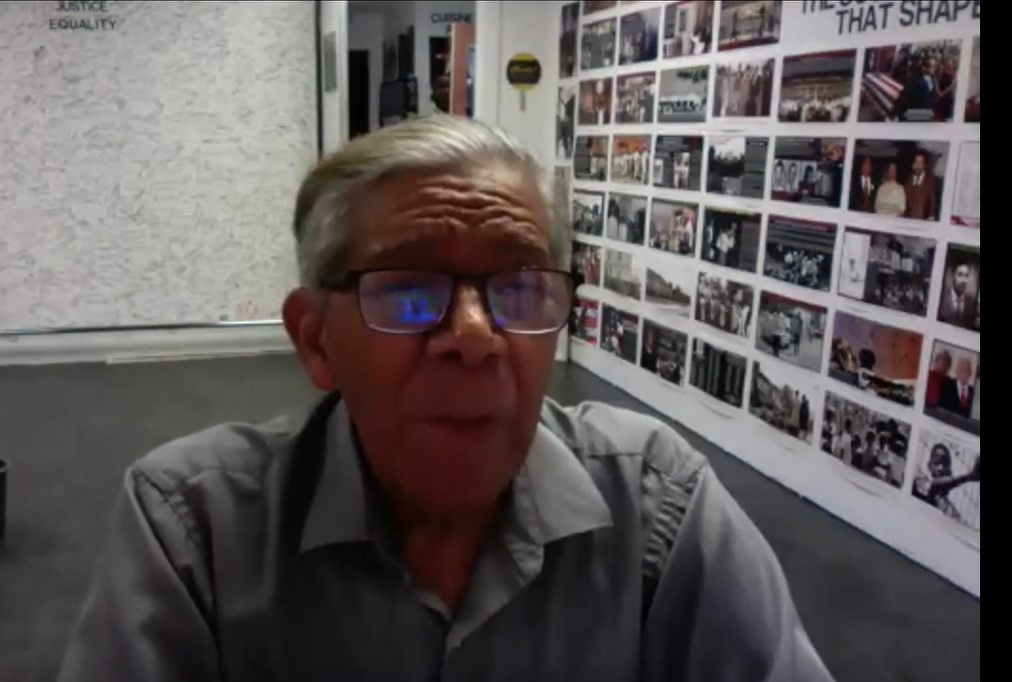‘Law enforcement forgot about dignity of human beings’
By: TYUANNA WILLIAMS
Feb 19, 2023
 Cecil Williams speaks to student reporters via Zoom from his musuem.
Cecil Williams speaks to student reporters via Zoom from his musuem.
Photographer Cecil Williams on Jan. 31 recounted the events that led to the Orangeburg Massacre.
“It brings back memories, some of which seem like it was just yesterday,” Williams said during a news conference with student journalists from Claflin University.
“They don’t seem to remember the Orangeburg Massacre where law enforcement forgot about the dignity of human beings,” Williams said.
An incident at the local All Star Bowling Lanes on Feb. 6 was the catalyst for what took place on Feb. 8, 1968, on the campus of SC State, Williams said.
Although desegregation laws were in place, the bowling alley still bore signs that said, “Whites Only,” causing Black students to protest outside of the building.
“Orangeburg was a little out of touch with the desegregation of the United States," Williams said. “We were trying to change and modify the South Carolina state constitution and the United States Constitution.”
During the protest, a glass window of the bowling alley was broken due to a student either leaning on it or being pushed against it, Williams said.
The sharp noise from the glass breaking caused students to run and the police to chase them.
“I personally looked and saw a policeman reach and grab to his right for his gun,” Williams said.
Williams also witnessed two city police officers club a student after she fell to the ground.
“They were hitting her because she had the misfortune of falling to the ground, and they hit her because they could get to her,” Williams said.
As they ran back to campus, students threw rocks and damaged windows out of anger and helplessness, Williams said.
This led to the campus being locked down.
Williams was not on campus when the confrontation took place on Feb 8. After leaving earlier that day, he was unable to get back on campus due to police blockage, he said.
“South Carolina Highway Patrol went up on the campus at South Carolina State and shot students on their own campus,” Williams said.
Students that were there witnessed the head of SLED order 20 troopers to load their weapons; only nine obeyed, Williams said.
Those nine patrolmen took the lives of three students and injured 28 others in what is now known as the Orangeburg Massacre.
Two of the students, Samuel Hammond Jr. and Henry Smith were from then-South Carolina State College. The third student was Delano Middleton, a student from Orangeburg-Wilkinson High School.
Williams believes more students were injured than the recorded amount.
Some students did not go to the hospital or report their injuries, Williams said.
“It’s my personal opinion that maybe as many as 50,” Williams said.
The next day Williams was able to walk through the crime scene and take photographs.
“They didn't even put up crime scene tape to protect the debris of the crime scene,” Williams said. “Indeed this was a crime, a crime committed by the highest law enforcement officials in South Carolina.”
Williams found and collected a dozen shotgun shells. Some shells are on display at the Cecil Williams South Carolina Civil Rights Museum in Orangeburg.
On Feb. 8, 2023, Williams spoke at the SC State program titled “Black Resistance,” which observed the 55th anniversary of the Orangeburg Massacre.